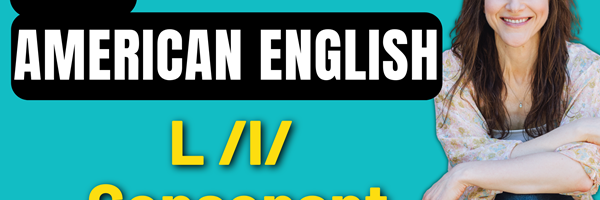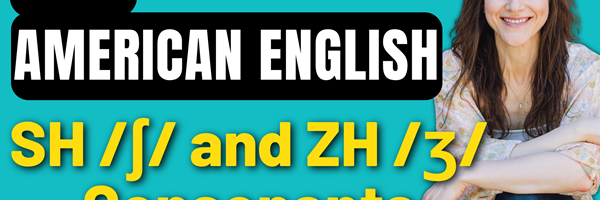(Video Transcript)
Chill, Jill
Rich, ridge
Lunch, lunge
Let’s learn how to pronounce the CH and J consonants in American English.
How to pronounce the CH /ʧ/ and J /ʤ/ consonants
The CH and J consonants are very similar.
They share the same lip, tongue, and jaw placements, which means they are made in the same place in the mouth. Watch as I say the two sounds, and you’ll notice that my mouth is in the same position for both sounds.
CH, J, CH, J
They also share the same type of air release or manner. These sounds are called affricates, which means they are a combination of two types of sounds. First, you make a stop consonant, which means the air is stopped somewhere along the vocal tract.
For the CH and J consonants, the airflow is stopped just behind the alveolar ridge as the blade of the tongue comes up to make contact. The blade of the tongue is the top part of the tongue that is just behind the tip. The airflow is also stopped in the throat as the vocal cords come together.
This first part is similar to a T sound for CH, and similar to a D sound for J.
Then once you release the air, you make a fricative sound. The air release for fricative sounds is noisy, turbulent, and constant. This second part is like an SH sound for CH, and a ZH sound for J.
Listen to the CH and J consonants. Can you hear both parts of the air release?
CH, J
Since these sounds finish with noisy, turbulent airflow, you can hold out these sounds:
CHHHHHH, JJJJJJJJ
But where they differ is voicing. The CH consonant is a voiceless consonant, which means it is made with just air passing through the vocal cords and out of the mouth. The vocal cords are turned off as you say this sound.
CH.
The J consonant is a voiced consonant. This means the vocal cords are turned on as you say this sound, and you should feel a vibration in the throat when you say it.
J.
To pronounce the CH and J consonants, you’ll combine the mouth position of two sounds. First, the lips come forward and flare away from the teeth, just like they do for the SH and ZH consonants.
But the blade of the tongue comes up to the roof of the mouth, just behind the alveolar ridge. The tongue is also in a wide shape.
The airflow is stopped here, where the blade of the tongue touches the roof of the mouth and in the throat, as the vocal cords close together. The air builds up behind the stop, and then you release the tongue and the throat to release the air into the next part of the sounds, the noisy and turbulent air release of the SH or ZH consonants. The lips remain forward and flared away from the teeth.
When making the J consonant, you should feel vibration in two places: in the throat and in the space between the upper and lower front teeth. This is the vibration of the air as it is exiting the mouth.
The CH consonant does not have vibration because it is a voiceless sound, so the vocal cords are turned off as you say it.
Let’s take a closer look at the CH and J consonants.
The CH /ʧ/ and J /ʤ/ consonants: Up close and in slow motion
Here is the CH sound in isolation. Notice how the lips come forward and flare away from the teeth. The tongue is wide, and the blade is up, just behind the alveolar ridge. The air is stopped here and in the throat, then the air is released as you bring the tongue down and the air flows into the noisy part of the sound, the SH consonant. The lips remain forward and flared.
Now the word chain. Lips forward and flared, tongue high and wide, blade up and touching the area just behind the alveolar ridge. Then the tongue comes down and the vocal cords open, and the air is released into the next part of the sound, the SH consonant.
Now the word page. You can’t see the vibration, but since this word has the voiced J consonant, the vocal cords are vibrating as I say it, and there is a secondary vibration in the space where the air exits the mouth, between the upper and lower front teeth.
CH /ʧ/ and J /ʤ/ consonant practice
Let’s practice a few words together. Say the words with me. We’ll start with the CH consonant.
Chair, CH, Chair
Teacher, CH, teacher
Witch, CH, witch
Now the J consonant. Feel the vibration of the vocal cords in your throat and in the space where the air exits the mouth.
July, J, July
Pigeon, J, pigeon
Edge, J, edge
Thanks so much for practicing the CH and J consonants with me. I hope this video was helpful! But we don’t have to end the practice here - let’s keep working together! Check out the additional practice videos of the CH and J consonant sounds in English Pro, my comprehensive online accent training community. The details on how to enroll in English Pro are in the description below. Thanks, and have a great day!
And I'd love to hear from you - contact me to learn how we can work together to perfect your American English pronunciation!



